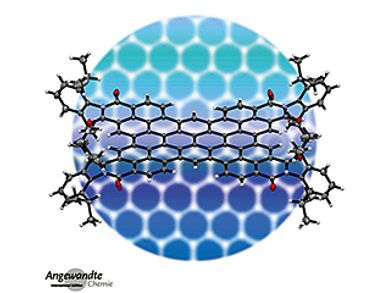In this issue, K. H. van Pée et al. review specific enzymatic halogenation. How were halogenated enzymes discovered and how are they used in vivo and in vitro? The Highlight deals with the rational design of proteasome inhibitors as antimalarial drugs (C. Le Chaplain and M. Groll).
In the Communications section, F. Würthner et al. report on an electron-poor nanographene they made by cascade C–C bond formation reactions. P. M. O’Neill et al. describe a proteomic approach to reveal the protein alkylation profile of antimalarials. J. Luo et al. discovered a photoferroelectric organometallic halide with strongly anisotropic photovoltaic properties, and T. Kondo et al. discuss a CRISPR/Cas9 method for targeted transcriptional activation.
- Angewandte Chemie 22/2016: Fighting Diseases,
Angew. Chem. Int. Ed. 2016, 55 (22).



